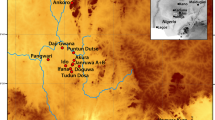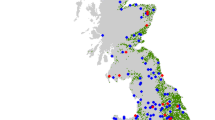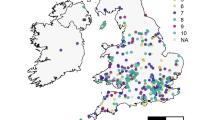Abstract
The pressures on honeybee (Apis mellifera) populations, resulting from threats by modern pesticides, parasites, predators and diseases, have raised awareness of the economic importance and critical role this insect plays in agricultural societies across the globe. However, the association of humans with A. mellifera predates post-industrial-revolution agriculture, as evidenced by the widespread presence of ancient Egyptian bee iconography dating to the Old Kingdom (approximately 2400 BC). There are also indications of Stone Age people harvesting bee products; for example, honey hunting is interpreted from rock art in a prehistoric Holocene context and a beeswax find in a pre-agriculturalist site. However, when and where the regular association of A. mellifera with agriculturalists emerged is unknown. One of the major products of A. mellifera is beeswax, which is composed of a complex suite of lipids including n-alkanes, n-alkanoic acids and fatty acyl wax esters. The composition is highly constant as it is determined genetically through the insect's biochemistry. Thus, the chemical 'fingerprint' of beeswax provides a reliable basis for detecting this commodity in organic residues preserved at archaeological sites, which we now use to trace the exploitation by humans of A. mellifera temporally and spatially. Here we present secure identifications of beeswax in lipid residues preserved in pottery vessels of Neolithic Old World farmers. The geographical range of bee product exploitation is traced in Neolithic Europe, the Near East and North Africa, providing the palaeoecological range of honeybees during prehistory. Temporally, we demonstrate that bee products were exploited continuously, and probably extensively in some regions, at least from the seventh millennium cal BC, likely fulfilling a variety of technological and cultural functions. The close association of A. mellifera with Neolithic farming communities dates to the early onset of agriculture and may provide evidence for the beginnings of a domestication process.
Similar content being viewed by others
Article PDF
Author information
Authors and Affiliations
Rights and permissions
About this article
Cite this article
Roffet-Salque, M., Regert, M., Evershed, R. et al. Widespread exploitation of the honeybee by early Neolithic farmers. Nature 534, S17–S18 (2016). https://doi.org/10.1038/nature18451
Published:
Issue Date:
DOI: https://doi.org/10.1038/nature18451
This article is cited by
-
Sericulture and the edible-insect industry can help humanity survive: insects are more than just bugs, food, or feed
Food Science and Biotechnology (2022)
Comments
By submitting a comment you agree to abide by our Terms and Community Guidelines. If you find something abusive or that does not comply with our terms or guidelines please flag it as inappropriate.



